Steph W. from SEOPressor


...help you check your website and tell you exactly how to rank higher?


85
score %
SEO Score

Found us from search engine?
We rank high, you can too.
SEOPressor helps you to optimize your on-page SEO for higher & improved search ranking.
By allysa on December 9, 2015

2015 is almost out and 2016 is just around the corner. If you are wondering what’s changed in SEO world, the answer is A LOT! Things like RankBrain, Schema Markup as well as long contents are among the things that’s going to be big in 2016.
But what about keyword research? How much have it changed? Considering that keyword research is arguably the most important part of SEO that’s going to dictate how the rest of the campaign will go, it’s quite an important question to answer.
Besides some tools going in and out of popularity (and also existence), keyword research have remain mostly the same. That is fine and all if you intend to stay at the same spot. But in order to rise up in the ranks we will need some new strategies of doing keyword research in 2016.
[bof_display_offer id=18969]
Besides the usual things like keyword volume, the use of short tail versus long tail keywords and competitor research, there are more questions that we should also ponder – Questions like how profitable the keywords are or what sort of products or services you can offer in relation to a particular set of keywords.
So let’s look at the 4 steps of doing keyword research that’s going to give you the competitive edge in 2016:
Obviously you’ll need to start with picking a main keyword that you’re going to aim to rank for. This can be pretty straightforward as it describes the main activity of your business. For example, SEOPressor obviously will aim for “search engine optimization” as our main keyword.
The next step will be to go deeper into the nature of your main keyword. You can do this by analyzing the Google Search Engine Results Page itself:

Google generate the related search suggestions based on popular queries made by users.

The autocomplete function of Google search also have similar benefit to the related search feature.
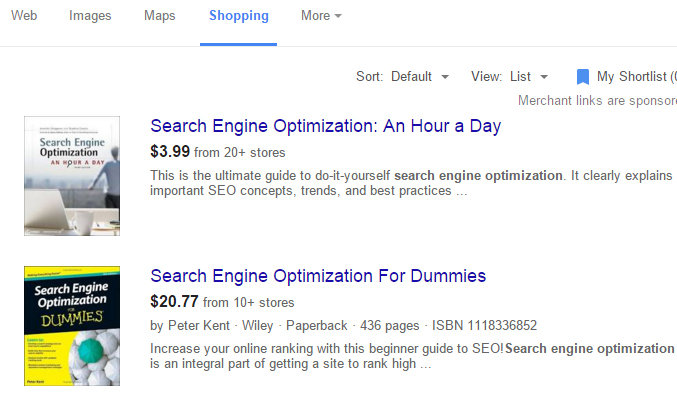
Shopping results can give insights on the marketability of any keywords.

Having paid ads means that a keyword is both valuable and competitive.

Even more insights can be gained from analyzing top ranking results. For example, the difficulty of ranking for it.
Just by looking at the SERP you can already gather tons of information related to your keyword. But that’s not all you can do. There are also a lot of other websites you can use to gather more intel:
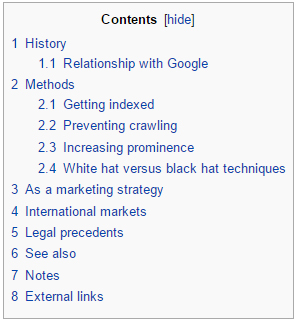
Items listed in the table of contents of Wikipedia articles can give you more ideas on topics revolving your keyword.

By analyzing questions on query-based sites, you know what kind of information people are actually looking.
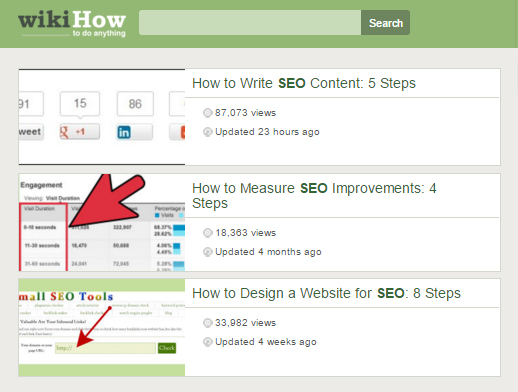
How-to articles are usually highly demanded and you can discover ideas for such topics on websites like Wikihow.
By doing the following you’ll get the key information of things you need for Google to recognize your site as relevant to the target keyword and rank it better.
After learning about the keyword itself, it’s time to dig deeper into the ranked results on the SERP itself. There can be literally millions of results for a certain query but the only ones worth analyzing are the top 10 results.
We analyze the top results for a number of reasons:
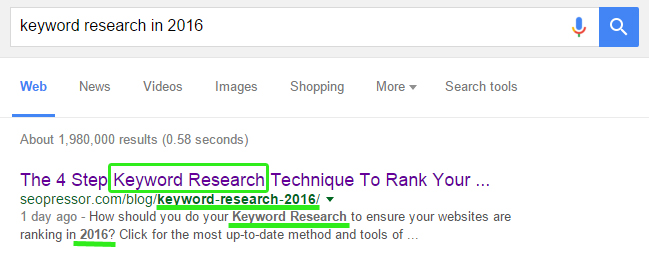
Analyze how top-ranking results include the target keywords in their Title, URL and metadata.
There are two aspects to consider when doing an analysis of the top-ranking results:
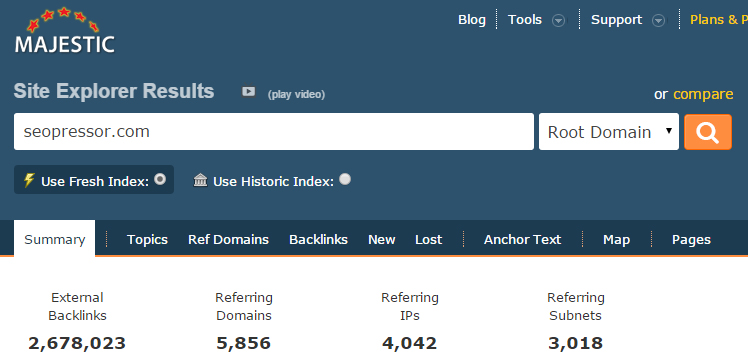


Once you’ve done with analyzing the top 10 ranking results for a keyword, you’ll know exactly what elements are needed in your own websites to rank well.
Other than the main keyword, we can also find new related keywords we can try to rank for. The way I do it is by using Google Keyword Planner. Pretty straightforward – Just use the “Search for new keywords” option and look at the “Ad group ideas” to see how Google is grouping keywords together. Finding good categories that can be used for your own site shouldn’t be too difficult.
Things you might want to look for:
By targeting multiple related keywords, it’s easier to diversify your topics and contents.
As you get additional keywords to accompany your main keywords, you can expand each of them by using LSI keywords. Simply put, LSI keywords are complementary keywords often found used alongside a particular keyword.
For example, websites that talks about “hoops”, “spalding” and “lebron” might get ranked for the word “basketball”.
LSI keywords can also give the right context for an ambiguous keyword. For example, “fruit salad”, “healthy” and “sweet” can tell Google that “apple” means the fruit. While “ipad”, “macbook” and “ios” can tell Google that it means the tech company instead.
Using the right LSI keywords associated with your main keywords can further strengthen the signals you give Google when ranking your website. There are lots of ways to get LSI keywords.
One way of doing it is by analyzing the top 10 results of a particular keyword simultaneously:

LSI keywords for the term “keyword research”
Using this technique will let you know the most popular LSI keywords found in all the top 10 results ranking for that particular keyword. But the drawback is that it only gives you single keywords.
Another alternative is by using the Keyword Analyzer tool by Web SEO Analytics. You can only analyze one URL at a time but it also provide you with most often used two to five word phrases instead of just single keywords.
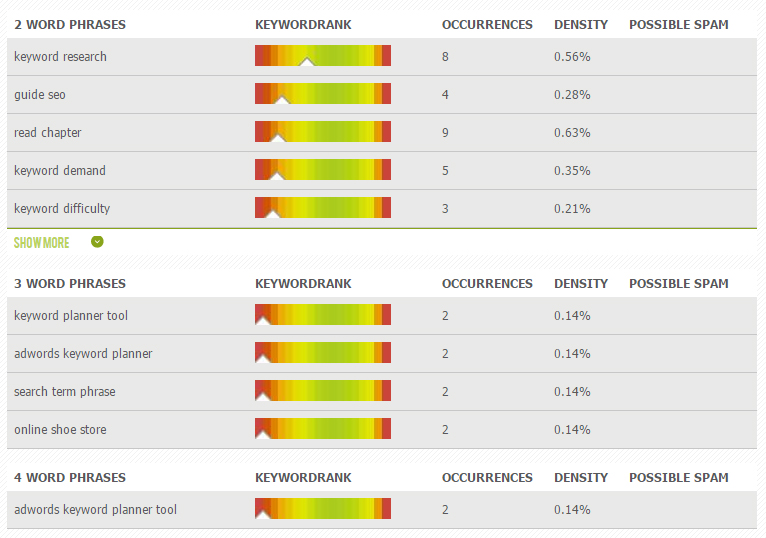
Key phrases that can be found in top ranking sites often make good LSI keywords.
Yet another even simpler tool is by using LSIGraph. You simply key in your target keyword and it will generate a list of LSI keywords to complement it. With this tool you don’t even need to analyze your competitors when it comes to getting LSI keyword suggestions!
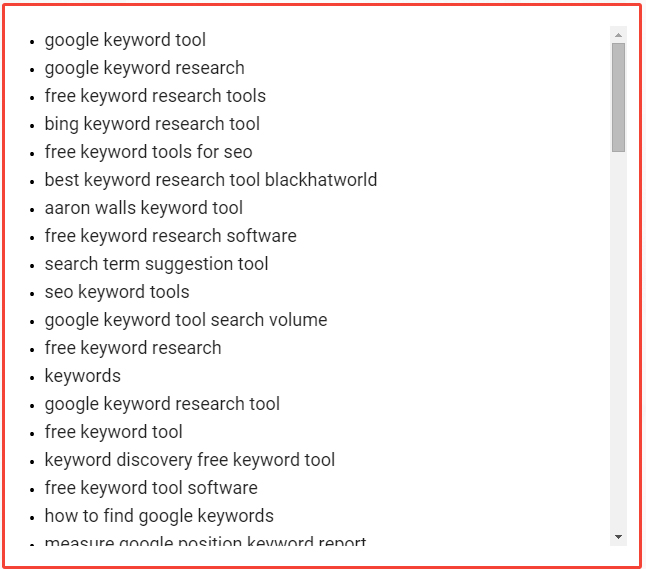
LSIGraph is a free and easy to use tool to get LSI keyword suggestions.
At this point you’ve already gathered the essential information that can get your own website a good ranking. To recap, here’s what we have gathered so far:
What’s left is to incorporate all of these factors into your own website and contents. Some points worth noting is most of the time, you might notice that not all top ranking sites have everything in place (keywords in title, headers, URL). In this case you know you’ll stand a chance to rank by combining what some results miss that others include.
Our latest SEOPressor Connect’s improved on-page optimization lets you optimize your contents easily. The plugin also allows you to score and track your SEO status to give you an idea on how well the optimization is done.
Once you’re done with optimizing the on-page factors what’s left is to catch up with the off-page factors and you can roughly determine when it is achievable by comparing the amount of backlinks the top-ranking results have and your own backlink growth.
Keyword research is the first step to take that often determines the success or failure of an SEO campaign. With the ever-changing nature of search engines as well as the industry that revolves around it, it’s important to keep a lookout for new methods and tools to do keyword research in order to not only keep up, but also trump the competition!
Updated: 3 July 2025


Save thousands of dollars (it’s 100x cheaper)

Zero risk of Google penalty (it’s Google-approved)

Boost your rankings (proven by case studies)
Rank High With This Link Strategy
Precise, Simplified, Fast Internal Linking.
